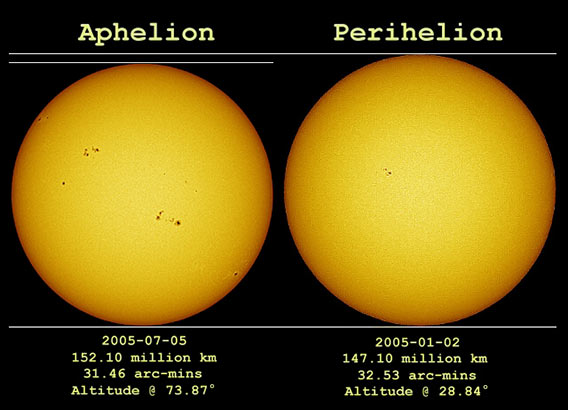Create a free profile to get unlimited access to exclusive videos, sweepstakes, and more!
Happy Aphelion 2013!

At about 15:00 UTC today, July 5, 2013 (11:00 a.m. EDT), the Earth reached aphelion, the point in its orbit when itâs farthest from the Sun. At that time, we wereâvery roughly, of courseâ152,097,427 kilometers from the Sun. Thatâs 94,508,770 miles, for us Americans.
The Earthâs orbit around the Sun is not a circle, but a mild ellipse. That means the distance to the Sun changes over the course of a year, by about 5 million km (3 million miles). Every year, in early July, we reach the farthest point, just as every year in January we reach perihelion, our closest point to the Sun.
That difference in distance is actually pretty small compared to the average; only about 3 percent. We do receive a little less light and heat from the Sun at aphelion, just as we get a little bit more at perihelion. But it doesnât amount to very much, and of course over the year it averages out.
Interestingly, the exact distance to the Sun at aphelion changes every year, mostly due to the influence of the Moon! As the Moon orbits the Earth, the gravity of the Moon tugs on us. Picture two children, one bigger than the other, facing each other and holding hands. If they twirl around each other, the little kid makes a big circle, and the big kid makes a little circle (the size of each circle depends on the ratio of their masses). The same is true for the Earth and the Moon; the Moon has a big orbit around the Earth, but the Earth makes a little circle in space too. The midpoint of the two is called the barycenter, and the Moon and Earth are always on opposite sides of it.
This year, today, the Moon is between us and the Sun, which means the Earth is a little bit farther from the Sun than average, by a few thousand kilometers. Last year, in 2012, the Earth was between the Moon and the Sun, so aphelion was a little bit smaller than average; we were closer to the Sun then by about 5000 kilometers (a bit less than the Earthâs radius) than we are today.
So there you go. Happy aphelion! Over the course of the next six months, every day weâll be a little bit closer to the Sun. Then, on Jan. 4, 2014, at around noon UTC, weâll reach perihelion, and the whole cycle will start over again⦠just as it has for the past several billion years.
Heliocentrism! I love this stuff.














